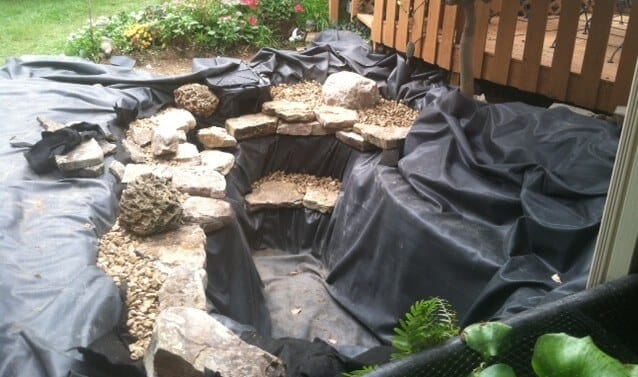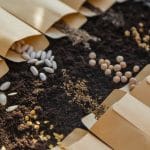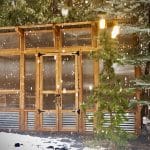How to Fix a Leaking Pond
Ponds & Water Features

Let’s get this out of the way first: the word “leak” in pond talk? It’s a four-letter word in more ways than one. Nobody wants to hear it. And the second you do, your brain starts spinning—liner failure, hidden cracks, mystery holes. I’ve been there. But here’s the truth: pond leaks are usually simpler than folks think.
Not always easy to spot, sure—but once you know where to look, most leaks can be fixed without tearing everything apart. So grab a cup of coffee, and let’s walk through this together.
First Rule of Pond Leaks: It’s Not Magic
If your pond’s losing water, something physical is causing it. That may sound obvious, but it’s easy to overthink. EPDM pond liner doesn’t just go bad out of nowhere. If there’s a hole or a failure, there’s a reason—and there’s usually a pretty solid clue about where to look.
Instead of guessing or draining the whole thing in frustration, go step-by-step and track it down.
Start with the Simple Test
This process of elimination saves a ton of time:
- Fill the pond up (don’t forget dechlorinator if you have fish — Microbe-Lift or API Stress Coat+ work well).
- Mark the water line.
- Turn off the pump for 12–24 hours. (Add aeration with something like a TetraPond APK100 if it’s hot or heavily stocked.)
Then observe:
➤ If it still leaks with the pump off:
That points to a leak somewhere in the main pond body:
- A low spot in the liner
- A leaky pond skimmer
- Or a hole in the liner
➤ If it holds water with the pump off:
Then the issue’s probably in the upper section of the system:
- A waterfall box seal
- A hose or bulkhead fitting
- A settled liner edge in the waterfall or stream
Now you know where to start looking.
Common Leak Culprits and How to Fix Them
1. Skimmer or Waterfall Filter Leaks
After 8–10 years, the screws that hold the liner tight against the faceplate often corrode.When the old hardware fails, it can cause the seal to break and allow water to seep out.
To address this issue, follow these steps:
1. Remove the old hardware.
2. Apply new, pond-safe silicone sealant.
3. Install new screws or bolts.
**Recommended:** Aquascape Black Silicone Sealant and stainless steel self-tapping screws.
**2. Bulkhead Fitting Leaks**
This occurs where the hose connects to the back of your waterfall box or filter.Ground pressure can slowly nudge it out of alignment, and over time, the fitting can loosen.
Fix it:
Replace the bulkhead fitting and, while you’re at it, upgrade the hose.
🛠 Recommended: Atlantic Water Gardens bulkhead fittings + Freeze Flex PVC tubing (or heavy-duty kink-free hose)
3. Low Spots in the Liner
Low spots happen when the ground settles and takes the liner edge with it—usually after a few seasons. Water finds the low point and slowly seeps out. This one’s sneaky because the leak isn’t in the middle of the pond—it’s up at the edge.
How to find it:
Clear away gravel or plants and visually inspect the liner edge all the way around.
Fix it:
- If there’s slack, pull the liner up and anchor it with stone.
- If not, splice in a patch using liner, seam tape, and primer.
🛠 Recommended: Firestone QuickSeam Tape, cover strip, and QuickPrime Plus Primer
4. Actual Holes in the Liner
Not common, but it happens—roots, rocks, tools, or animals can pierce it. If you know where the damage is, patching it’s pretty easy.
Fix it:
Clean and dry the area well. Apply a patch kit or use seam tape and primer. Let it cure.
🛠 Recommended: Pond Armor Patch Kit or Firestone EPDM Patch Kit
When It’s Not a Leak: Don’t Forget Evaporation
Hot weather, wind, and full sun can pull 1–2 inches of water out of a pond every week, sometimes more. If your water level is dropping slowly and only during hot stretches, it may not be a leak at all. A bucket test can help confirm.
Final Thoughts
Most leaks boil down to three things:
- Something came loose (like a fitting or seal)
- Something shifted (like the liner edge or a stone)
- Or something punctured the liner (rare, but fixable)
Pond leaks can be frustrating, but they don’t have to be overwhelming. With a little patience and a methodical approach, you can usually find the source without draining or rebuilding.
I’ve found that walking the edges slowly, checking connections, and getting your hands on the liner tells you more than hours of guesswork. And once it’s fixed? You get that peace of mind back—and a pond that holds like it should.
FAQ: Pond Leak Troubleshooting
Q: How do I know if it’s evaporation or a leak?
Try the bucket test: set a full bucket of pond water next to the pond, mark both water lines, and compare after 24 hours. If the pond drops more than the bucket, you’ve got a leak.
Q: Can I fix a liner leak without draining the pond?
Yes, often. Many edge leaks, skimmer seal issues, and even small liner holes can be fixed without draining the whole system.
Q: What’s the best sealant to use?
Aquascape Black Silicone is pond-safe, flexible, and long-lasting. Danner Clear Aquarium Sealant is another good one.
Q: What hose should I upgrade to?
Freeze Flex PVC tubing is a solid choice. It doesn’t crack in winter and doesn’t kink like the cheap stuff.
Q: How often should I inspect my pond edges and fittings?
At least twice a year—spring and fall are great times to walk the perimeter and do a hands-on check.
Leaks happen. But they’re usually fixable, and more often than not, they teach you a little more about how your pond breathes, moves, and settles over time. Once you know where to look, it’s not so scary—it’s just another part of the process.
And if you’ve got a wrench in one hand and a mug in the other, you’re doing it right.
Share this post
Table of Contents
- First Rule of Pond Leaks: It’s Not Magic
- Start with the Simple Test
- ➤ If it still leaks with the pump off:
- ➤ If it holds water with the pump off:
- Common Leak Culprits and How to Fix Them
- 1. Skimmer or Waterfall Filter Leaks
- 3. Low Spots in the Liner
- 4. Actual Holes in the Liner
- When It’s Not a Leak: Don’t Forget Evaporation
- Final Thoughts
- FAQ: Pond Leak Troubleshooting
All categories
More From The Garden
Disclosure: This post may contain affiliate links. That means if you click and buy, The Bright Garden may earn a small commission, at no extra cost to you. We only recommend products we’ve vetted and believe will benefit our readers.












